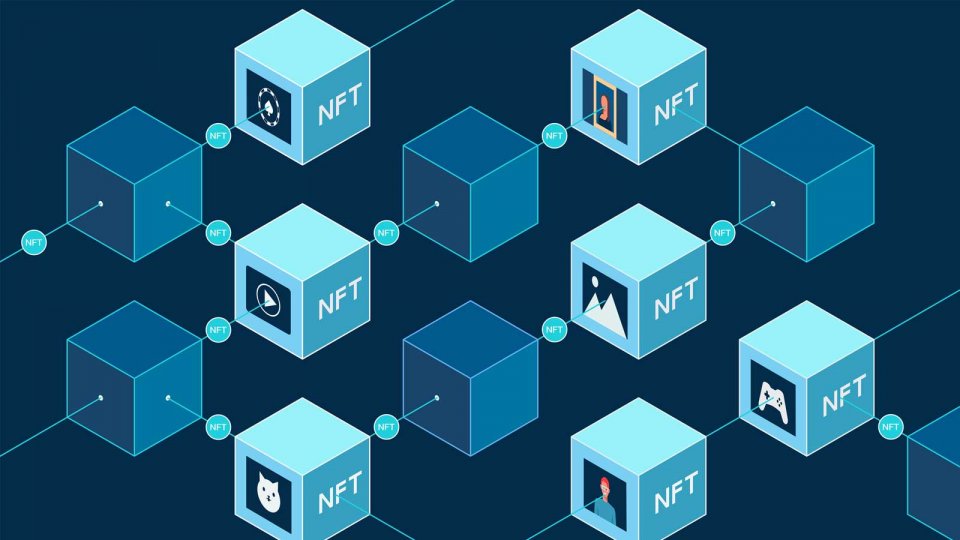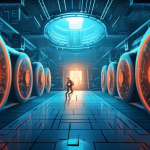
Non-Fungible Tokens Mechanics: Understanding How Does NFT works
Oct 26, 2023
Non-Fungible Tokens Mechanics: Understanding How Does NFT works
The surge of interest in NFTs (Non-Fungible Tokens) has created a buzz in the digital world. While you may have heard of NFTs, understanding how they work is key to navigating this exciting digital landscape. In our previous article, " Meaning of NFT explained: What are Non-Fungible Tokens and what it does? ", we defined NFTs and explored their significance. Now, let's journey deeper to uncover the intricate mechanisms that power NFTs and give them their unique properties.
What Are NFTs?
Before we dive into the inner workings of NFTs, it's crucial to revisit the basics. NFTs, or Non-Fungible Tokens, are digital assets that represent ownership of a specific item, whether it's a digital file or a physical object. Unlike traditional cryptocurrencies such as Bitcoin and Ethereum, NFTs are one-of-a-kind and indivisible. Each NFT is a digital certificate of authenticity, establishing the uniqueness of the item it represents.
In our previous article, " Meaning of NFT ” we touched upon the core concept of NFTs. Now, let's unravel how these unique tokens function within the digital realm.
1. The Role of Blockchain and Types of Blockchain
Blockchain technology is at the heart of how NFTs function, ensuring transparency, security, and trust in the digital realm. The blockchain's role is fundamental to understanding NFTs and their operation. Additionally, various types of blockchains support NFTs, each with its unique features and characteristics. Let's delve into these interconnected aspects:
2. The Role Of Blockchain
Blockchain acts as a decentralized, tamper-resistant digital ledger that records every NFT transaction. This ledger ensures the transparency of ownership and verifies the authenticity of each NFT. It's the backbone of NFT technology, providing the unalterable history of an NFT's journey.
Every NFT is stored on a blockchain, which not only verifies its authenticity but also ensures that it is scarce and indivisible. This scarcity is achieved by using cryptographic techniques that make each NFT distinct. As a result, artists and creators can confidently assert ownership, while collectors can trust the provenance of their digital or physical assets.
It's essential to comprehend that the choice of blockchain can significantly influence the characteristics and functionality of NFTs. Therefore, understanding the types of blockchain that support NFTs is crucial.
3. Types Of Blockchain
NFTs are not limited to a single blockchain but are hosted on various blockchain networks. The choice of blockchain can impact factors such as transaction fees, scalability, environmental sustainability, and more.
Ethereum, with its robust and well-established ecosystem, is a popular choice for hosting NFTs. It introduced the ERC-721 and ERC-1155 standards that govern NFTs on its blockchain. These standards have been widely adopted and have set the standard for NFT creation and trading.
Other blockchains like Binance Smart Chain , Polygon, Solana, and even Bitcoin have entered the NFT space, each offering unique features and advantages. Polygon, for example, is known for its lower transaction fees, making it an attractive option for creators and collectors.
The type of blockchain you choose can impact the accessibility and user experience of NFTs. It's important to weigh the pros and cons of each blockchain and select the one that aligns with your goals and priorities.

Image Source: https://online.stanford.edu/how-does-blockchain-work
Smart Contracts and NFTs
Smart contracts play a pivotal role in NFT transactions, automating processes and ensuring the seamless transfer of ownership. These self-executing contracts, encoded with predefined rules and conditions, execute actions when specific criteria are met. In the NFT world, smart contracts facilitate the minting of NFTs, the buying and selling of these unique tokens, and the distribution of royalties to creators.
When you purchase an NFT, a smart contract automatically transfers ownership to you, making the transaction quick and secure. These contracts also empower creators with royalties, allowing them to earn a percentage of the resale value of their works every time the NFT changes hands. The automation brought by smart contracts simplifies the NFT experience and adds an extra layer of security.
Minting NFTs
Minting an NFT is the process of creating a new non-fungible token. It's akin to giving birth to a digital or physical item in the NFT world. During the minting process, creators and artists utilize specialized platforms and marketplaces. They input crucial information about the item, such as its title, description, and any associated files.
Once an NFT is minted, it's recorded on the blockchain, establishing it as a unique and verifiable digital asset. Minting isn't without its nuances; the process may involve fees and considerations that vary depending on the chosen blockchain. It's this initial minting process that introduces an item into the world of NFTs, paving the way for ownership, transfer, and collection.
Ownership and Provenance
Ownership is at the core of NFTs, and the blockchain ensures that each NFT is a digital certificate of authenticity. The blockchain maintains a transparent and unchangeable record of ownership, offering both creators and collectors a reliable way to prove the authenticity of their digital or physical assets.
This chain of custody, known as provenance, is invaluable in establishing the history of an item's ownership. In essence, NFTs are like digital passports for your possessions. They offer an uncontestable history of an item's journey through various hands. This level of transparency and proof of authenticity is revolutionizing industries like art, gaming, and collectibles.
The Marketplace Ecosystem
NFTs have given rise to a thriving digital marketplace that connects creators, collectors, and enthusiasts. The marketplace ecosystem plays a vital role in the NFT journey, providing a platform for creators to mint and sell NFTs while offering collectors a space to explore, buy, sell, and trade these unique digital assets.
NFT marketplaces have become central hubs in the NFT world, serving as bridges between creators who mint NFTs and individuals interested in acquiring them. Some of the most popular NFT marketplaces include OpenSea , Rarible , Magiceden , and others, each with its unique features and offerings.
These marketplaces provide a user-friendly environment where you can discover a diverse range of digital assets, from digital art to virtual real estate. Whether you're a creator looking to mint NFTs or a collector seeking unique pieces, these platforms offer a space to engage in the world of NFTs.
NFT Use Cases
NFTs are incredibly versatile, finding applications across various industries and domains. In our previous article, we explored their use in art, gaming, and collectibles. However, NFTs extend far beyond these realms.
Artists, musicians, game developers, and even creators of virtual real estate have embraced NFTs. In our upcoming sections, we'll dive into additional use cases, such as Memeland NFT Casestudy, tokenizing intellectual property, creating virtual experiences, and more. NFTs have blurred the lines between the physical and digital worlds, opening up opportunities for ownership and transfer like never before.
In conclusion, we've navigated through the intricate workings of NFTs, from their foundation in blockchain technology to the automation of transactions through smart contracts. We've explored how NFTs are minted, how they establish ownership and provenance, and their wide array of real-world applications.
NFTs have become a catalyst for innovation and are revolutionizing how we perceive ownership in the digital age. This technology transcends industries, from art to gaming and beyond, offering creators and collectors a new way to interact with digital assets.
As you venture further into the world of NFTs, you'll discover a vibrant and ever-evolving landscape. Whether you're an artist, a collector, or simply intrigued by this digital revolution, there's a place for you in the NFT universe.
At Marvion Labs , we have been at the forefront of helping companies venture into the web 3.0 space. Our expertise and services have supported organizations like Resimax Group and Hong Kong University in navigating the digital frontier.
If you're interested in exploring the endless possibilities of web 3.0, we invite you to learn more about Marvion Labs . Our team is dedicated to guiding you through the complexities of this exciting digital era. Visit our website to discover how we can assist you in your journey into the world of NFTs, blockchain technology, and the web 3.0 landscape.


